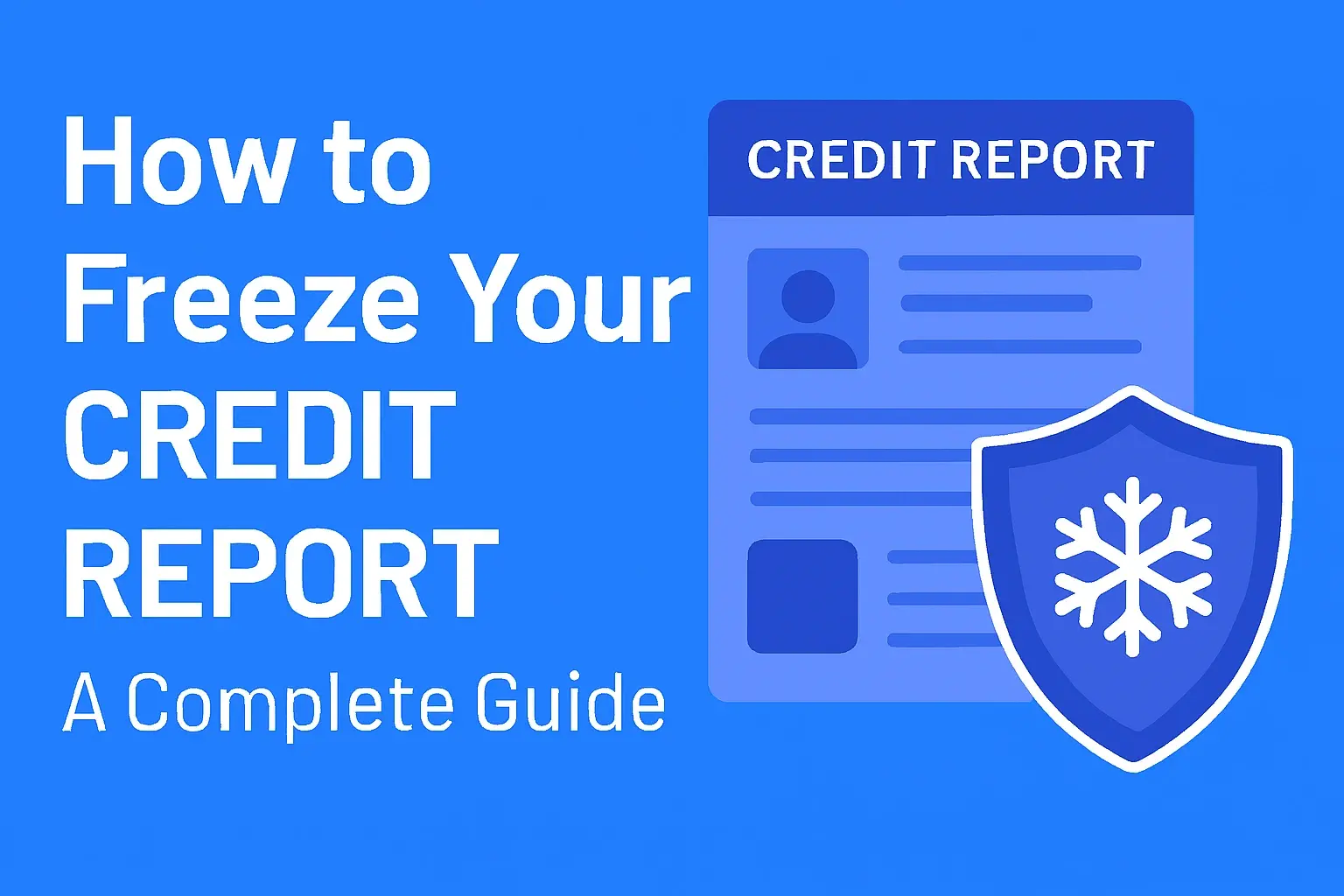-
Posted on: 10 Feb 2025

-
Understanding your credit score is crucial for financial health. A 632 credit score falls into the "fair" category, meaning while not excellent, it's not severely detrimental either. This guide will help you interpret what a 632 score signifies and outline actionable steps to improve it.
What Exactly is a 632 Credit Score?
A 632 credit score is generally considered to be in the "fair" range by most major credit bureaus and scoring models, such as FICO and VantageScore. This means it's above the "poor" or "bad" credit categories but below "good" or "excellent." Individuals with a 632 score might face challenges in securing the best interest rates on loans or credit cards, and some lenders may view them as higher risk. However, it's a score that can be significantly improved with consistent, positive financial habits.
Understanding the Fair Credit Category
The fair credit score range typically spans from approximately 580 to 669 on the FICO scale. A 632 score sits comfortably within this segment. It signals to lenders that while you have some credit history, there might be past issues or a lack of extensive positive activity that prevents your score from reaching higher tiers. This score indicates a need for more diligent credit management but doesn't necessarily close doors to all financial opportunities. It's a starting point for improvement, not a dead end.
The Significance of a 632 Score in 2025
In the current lending landscape of 2025, a 632 credit score still presents a mixed bag. While some lenders may approve applications, the terms offered are likely to be less favorable than for those with higher scores. This could translate to higher interest rates on mortgages, auto loans, and credit cards, as well as potentially larger down payment requirements or higher security deposits for services. Understanding this significance is the first step toward actively working on your credit profile.
Credit Score Ranges and What They Mean
Credit scores are numerical representations of your creditworthiness, designed to predict how likely you are to repay borrowed money. They are typically categorized into distinct ranges, each carrying different implications for your financial life. Understanding these ranges helps contextualize a 632 score and highlights the benefits of moving into higher tiers.
FICO Score Ranges (2025 Data)
The FICO score is the most widely used credit scoring model in the United States. Its ranges are generally as follows:
Score Range Category Implications 800-850 Exceptional Best interest rates, premium credit cards, highest approval odds. 740-799 Very Good Excellent loan terms, broad credit card offers. 670-739 Good Generally good loan terms, many credit card options available. 580-669 Fair Potentially higher interest rates, limited credit card options, may require co-signer or larger down payment. A 632 score falls here. 300-579 Poor Significant difficulty obtaining credit, very high interest rates, may require secured credit or specialized loans. VantageScore Ranges (2025 Data)
VantageScore is another popular scoring model. Its ranges are slightly different:
Score Range Category Implications 781-850 Excellent Top-tier rates and offers. 661-780 Good Favorable terms. 601-660 Fair Moderate risk, potentially higher costs. A 632 score is in this range. 500-600 Poor Higher risk, limited options. As you can see, a 632 score generally places you in the "fair" category across both major models, underscoring the need for strategic credit management to unlock better financial products and savings.
Key Factors Influencing a 632 Credit Score
Your credit score is a dynamic number influenced by several key factors. Understanding which of these are likely impacting your 632 score is the first step toward targeted improvement. These factors are weighted differently, meaning some have a more significant impact than others.
Payment History (Most Important)
This is the single most critical factor in your credit score, typically accounting for about 35% of the FICO score. Late payments, missed payments, or defaults on loans and credit cards will significantly drag down your score. If you have a history of these, it's a primary reason for a 632 score. Even a single 30-day late payment can have a noticeable negative effect.
Credit Utilization Ratio (Second Most Important)
This factor, making up about 30% of your FICO score, measures how much of your available credit you are using. A high credit utilization ratio (typically above 30%) indicates that you might be overextended and could be a higher risk. For example, if you have a credit card with a $1,000 limit and a balance of $500, your utilization is 50%, which is considered high and detrimental to your score.
Length of Credit History
The average age of your credit accounts and the age of your oldest account contribute about 15% to your FICO score. A longer credit history with responsible management generally leads to a higher score. If your credit accounts are relatively new or you've closed older, well-managed accounts, this could be a contributing factor to a score in the fair range.
Credit Mix
Having a mix of different types of credit, such as credit cards, installment loans (like mortgages or auto loans), and retail accounts, can positively impact your score (around 10% of FICO). This shows lenders you can manage various credit products responsibly. A lack of diversity in your credit mix might slightly lower your score.
New Credit and Inquiries
Opening several new credit accounts in a short period or having numerous "hard inquiries" (when a lender checks your credit for an application) can lower your score by about 10% of FICO. While applying for new credit is sometimes necessary, doing so too frequently can signal financial distress to lenders.
Common Pitfalls Leading to a 632 Score:
- Missed or late payments on credit cards or loans.
- Carrying high balances on credit cards, resulting in high credit utilization.
- Closing older credit accounts, which reduces the average age of your credit history.
- Applying for multiple credit cards or loans within a short timeframe.
- Having a limited credit history with few established accounts.
Identifying which of these factors are most prevalent in your financial behavior is crucial for developing an effective improvement plan. For instance, if payment history is the issue, your focus must be on making all payments on time. If credit utilization is high, reducing balances becomes the priority.
How Lenders View a 632 Credit Score
When lenders evaluate loan or credit card applications, your credit score is a primary indicator of your risk profile. A 632 credit score, falling into the "fair" category, signals to them that you represent a higher risk than someone with a "good" or "excellent" score. This perception influences the terms and conditions they are willing to offer.
Interest Rates and Fees
The most significant impact of a fair credit score is on the interest rates you'll be offered. Lenders charge higher interest rates to compensate for the increased risk of default. For example, a mortgage with a 632 score might have an interest rate that is 1-2% higher than for someone with a 740+ score. Over the life of a long-term loan, this difference can amount to tens of thousands of dollars in extra interest paid. Similarly, credit card APRs will likely be much higher.
Loan Approval Odds
While a 632 score doesn't automatically mean rejection, it does mean you're less likely to be approved for prime lending products. Lenders have internal score cutoffs, and a 632 might be below the threshold for their most desirable loan programs. You may find yourself approved for subprime loans, which come with less favorable terms, or you might need a co-signer with a better credit score to secure approval.
Down Payment Requirements
For significant purchases like homes or cars, lenders may require a larger down payment from borrowers with fair credit. This reduces the lender's exposure and mitigates their risk. For example, a mortgage lender might require 10-20% down from someone with a 632 score, whereas someone with excellent credit might qualify for a low or no-down-payment option.
Credit Limit and Terms
If you are approved for a credit card with a 632 score, expect a lower credit limit than what someone with a higher score would receive. This is another measure lenders take to limit their risk. The terms and conditions, such as annual fees, balance transfer offers, and rewards programs, may also be less attractive.
Specific Loan Types and Their Impact
- Mortgages: A 632 score can make obtaining a conventional mortgage challenging. You might need to look into FHA loans, which have more lenient credit score requirements but often come with higher mortgage insurance premiums.
- Auto Loans: Expect higher interest rates on car loans. The difference in monthly payments can be substantial. Some dealerships may offer in-house financing, but rates can be exceptionally high.
- Personal Loans: Approval for personal loans is possible, but interest rates will reflect the fair credit score. Online lenders specializing in fair credit may be an option, but always compare rates carefully.
- Credit Cards: You might qualify for secured credit cards or cards designed for individuals with fair credit. These often have lower credit limits and higher APRs.
It's important to remember that lenders look at the whole picture, but your credit score is a significant part of that picture. A 632 score indicates a need for caution from the lender's perspective, which translates into less favorable financial products for you.
Actionable Strategies to Improve a 632 Credit Score
Improving a 632 credit score is achievable with a focused and consistent approach. The key is to address the factors that are most heavily weighted in credit scoring models and to build a positive credit history over time. Here are actionable strategies to help you climb out of the "fair" credit range.
1. Prioritize On-Time Payments
Action: Make every payment on or before its due date. This is the most impactful step you can take.
How: Set up automatic payments for all your bills, including credit cards, loans, utilities, and rent (if reported to credit bureaus). Use calendar reminders or budgeting apps to track due dates. If you've missed payments, focus on getting current and staying current.
Why: Payment history is the most significant factor in your credit score. Consistent on-time payments demonstrate reliability to lenders.2. Reduce Your Credit Utilization Ratio
Action: Lower the amount of credit you are using relative to your total available credit. Aim for below 30%, ideally below 10%.
How:- Pay down existing credit card balances aggressively. Focus on cards with the highest interest rates first (the "avalanche method") or those with the smallest balances for quick wins (the "snowball method").
- Avoid maxing out credit cards.
- If you have a good payment history with a particular card issuer, consider requesting a credit limit increase. This can lower your utilization ratio without you spending more, but only do this if you won't be tempted to spend more.
Why: High credit utilization signals to lenders that you may be overextended and at higher risk of default.
3. Avoid Opening Too Many New Accounts
Action: Be judicious about applying for new credit.
How: Only apply for credit when you genuinely need it. Space out applications for new credit over several months or even a year.
Why: Each hard inquiry can slightly lower your score, and opening multiple new accounts in a short period can be seen as a red flag.4. Keep Old, Unused Accounts Open (If No Annual Fee)
Action: Resist the urge to close older credit accounts, especially if they don't have an annual fee.
How: If you have a credit card that you no longer use but has no annual fee, keep it open. Make a small purchase on it occasionally and pay it off immediately to keep it active.
Why: Closing older accounts reduces the average age of your credit history and can also decrease your overall available credit, potentially increasing your credit utilization ratio.5. Dispute Errors on Your Credit Report
Action: Regularly review your credit reports for inaccuracies.
How: Obtain your free credit reports from AnnualCreditReport.com. If you find any errors (e.g., accounts that aren't yours, incorrect late payment marks), dispute them with the credit bureau and the creditor.
Why: Incorrect negative information can unfairly lower your score. Removing errors can provide a significant boost.6. Consider a Secured Credit Card or Credit-Builder Loan
Action: If you have limited credit history or a damaged one, use tools designed to build credit.
How:- Secured Credit Card: You provide a cash deposit that becomes your credit limit. Use it for small purchases and pay it off in full each month.
- Credit-Builder Loan: You make payments on a loan that is held in an account until the loan is fully repaid. The payments are reported to credit bureaus.
Why: These products allow you to demonstrate responsible credit behavior and build a positive history that will be reported to the credit bureaus.
7. Manage Existing Debt Wisely
Action: Develop a plan to tackle any outstanding debt.
How: Beyond paying down credit card balances, consider debt consolidation if it makes sense for your situation. However, be cautious with debt consolidation loans, as they can sometimes lead to higher overall debt if not managed properly. Focus on reducing your debt-to-income ratio.
Why: Lowering overall debt levels improves your financial health and can positively influence your credit score.Implementing these strategies consistently will gradually improve your credit score, moving you from the "fair" category towards "good" and beyond. Patience and discipline are key.
Understanding Your Credit Report with a 632 Score
Your credit report is the detailed document that credit bureaus use to calculate your credit score. For someone with a 632 score, reviewing this report is essential to identify the specific issues holding your score back and to ensure the information is accurate. A 632 score often indicates particular patterns within your credit report.
Key Sections of Your Credit Report
Your credit report is divided into several main sections:
- Personal Information: Name, address, Social Security number, date of birth, employment information. Lenders use this to verify your identity.
- Credit Accounts: This is the core of your report, detailing all your credit cards, loans (mortgages, auto, student, personal), and sometimes retail accounts. For each account, you'll see:
- Creditor name
- Account number (often partially masked)
- Date opened
- Credit limit or loan amount
- Current balance
- Payment history (dates and status of payments, including any late payments)
- Account status (e.g., open, closed, charged off)
- Credit Inquiries: This section lists who has accessed your credit report.
- Hard Inquiries: Occur when you apply for credit. These can slightly lower your score.
- Soft Inquiries: Occur when you check your own credit, or when a company checks your credit for pre-approved offers. These do not affect your score.
- Public Records and Collections: This section includes information like bankruptcies, foreclosures, tax liens, and accounts that have been sent to collection agencies. These are serious negative marks.
What a 632 Score Might Reveal in Your Report
A 632 credit score often points to specific issues that would be visible in your credit report:
- Payment History: You'll likely see one or more instances of 30-day late payments. Depending on the recency and frequency, these will significantly impact your score. More severe delinquencies (60, 90+ days late) would likely result in an even lower score.
- Credit Utilization: Balances on credit cards will likely be high relative to their limits. For example, if you have a $5,000 total credit limit across all cards and your total balance is $2,500, your utilization is 50%, which is detrimental.
- Length of Credit History: Your oldest accounts might be relatively new, or you may have a history of closing accounts, leading to a shorter average age of credit.
- Number of Accounts: You might have few open credit accounts, or a limited mix of credit types (e.g., only credit cards and no installment loans).
- Recent Credit Activity: A cluster of hard inquiries from recent credit applications could be present.
How to Obtain and Review Your Credit Report
You are entitled to a free copy of your credit report from each of the three major credit bureaus (Equifax, Experian, and TransUnion) once every 12 months through AnnualCreditReport.com. This is the official, government-mandated source for free credit reports.
Steps to Review and Dispute Errors:
- Request Your Reports: Visit AnnualCreditReport.com and request your reports from all three bureaus.
- Examine Each Section Carefully: Pay close attention to the credit accounts section. Verify all account details, balances, and payment statuses.
- Check for Inaccuracies: Look for any accounts you don't recognize, incorrect balances, or incorrect payment statuses (e.g., a payment marked late when it was on time).
- Note Public Records: Ensure any public records listed are accurate and up-to-date.
- Document Everything: Keep copies of your reports and make notes of any discrepancies.
- Initiate Disputes: If you find errors, dispute them directly with the credit bureau. Most bureaus allow you to file disputes online, by mail, or by phone. You will need to provide documentation to support your claim. The credit bureau has a legal obligation to investigate your dispute within a specific timeframe (usually 30-45 days).
Understanding the contents of your credit report is fundamental to improving your 632 credit score. It provides the roadmap to identify and rectify issues that are negatively impacting your financial standing.
Common Misconceptions About Fair Credit Scores
The "fair" credit score category, where a 632 score resides, is often misunderstood. Many people hold misconceptions that can hinder their efforts to improve their credit or lead them to make poor financial decisions. Dispelling these myths is crucial for effective credit management.
Misconception 1: A Fair Score Means You Can't Get Credit
Reality: While a fair score (like 632) won't qualify you for the best rates or premium credit cards, it doesn't mean you're shut out of the credit market entirely. Many lenders offer products specifically for individuals with fair credit. These might include secured credit cards, credit-builder loans, or loans with higher interest rates. The key is that you *can* still access credit, but the terms will be less favorable.
Misconception 2: Closing Old Credit Cards is Always Good for Your Score
Reality: This is often the opposite of the truth. Closing older accounts can negatively impact your score in two main ways: it reduces your average age of credit history (a positive factor) and it decreases your total available credit, which can increase your credit utilization ratio if you carry balances on other cards. Unless an old card has a high annual fee that outweighs these benefits, it's usually better to keep it open and perhaps use it for small, recurring purchases that you pay off immediately.
Misconception 3: Checking Your Own Credit Score Harms It
Reality: Checking your own credit score or reviewing your credit report is considered a "soft inquiry" and does not affect your credit score at all. Only "hard inquiries," which occur when you apply for new credit, can have a minor, temporary negative impact. It's vital to check your credit regularly to monitor its health and identify any errors.
Misconception 4: All Credit Scores Are the Same
Reality: There are different credit scoring models (FICO, VantageScore) and variations within those models (e.g., industry-specific scores). While a 632 score generally falls into the "fair" category across most, the exact number might differ slightly depending on the model used. Lenders may also use different versions of these scores. It's important to know which score a lender is using, but understanding the general category is usually sufficient for most consumers.
Misconception 5: Paying Off Collections Immediately is Always the Best Strategy
Reality: While paying off collections is generally a good idea, the impact on your score can vary. Sometimes, paying off a collection account can "re-age" it, meaning it effectively resets the clock on how long it can remain on your report, potentially keeping it on your record for longer. It's often advisable to negotiate a "pay-for-delete" agreement, where the collection agency agrees to remove the item from your report in exchange for payment. However, not all collection agencies will agree to this, and sometimes paying it off without removal is still better than leaving it unpaid.
Misconception 6: Credit Repair Companies Can Magically Fix Your Score
Reality: Be wary of companies that promise to remove accurate negative information from your credit report or guarantee a significant score increase in a short period. Legitimate credit improvement involves time and consistent positive financial behavior. Credit repair companies can help dispute errors and offer advice, but they cannot remove accurate information. You can perform most of the same actions they do yourself, for free.
Understanding these realities is crucial for anyone aiming to improve their credit score from a 632. It empowers you to take the right steps and avoid common pitfalls.
Realistic Timeline for Credit Score Improvement
Improving a credit score from the "fair" range (like 632) to "good" or "excellent" is not an overnight process. It requires consistent effort and time for positive changes to reflect in your credit reports and scores. Setting realistic expectations is key to staying motivated.
Factors Affecting Improvement Speed
The speed at which your score improves depends on several factors:
- The severity of negative information: A single 30-day late payment from years ago will have less impact than multiple recent 90-day delinquencies or an active collection account.
- The strategies you implement: Aggressively paying down high credit card balances will yield faster results than just making minimum payments.
- The credit scoring model: Different models weigh factors slightly differently.
- Your starting point and credit history length: A person with a longer credit history and fewer negative marks might see quicker improvements than someone with a very thin credit file.
Estimated Timelines for Specific Improvements
- Improving from 632 to 670 (Good): This is often achievable within 6 to 18 months with diligent effort. Focusing on reducing credit utilization to below 30% and ensuring all payments are on time are the fastest ways to see gains. If you can get utilization below 10%, you might see even quicker progress.
- Improving from 632 to 740 (Very Good): This typically takes longer, often 18 to 36 months. This range requires not only consistent on-time payments and low utilization but also a longer positive credit history. Older negative marks will also start to have less impact as they age.
- Removing Negative Information:
- Late Payments: A 30-day late payment typically impacts your score for about two years, with its influence diminishing over time. 60-day and 90-day late payments have a more severe and longer-lasting impact.
- Collections: Collection accounts can remain on your report for up to seven years from the date of the original delinquency.
- Bankruptcies: Chapter 7 bankruptcies can stay on your report for up to 10 years, while Chapter 13 bankruptcies can stay for up to 7 years.
- Impact of Positive Actions:
- On-time payments: Each on-time payment builds positive history.
- Reducing credit utilization: A significant drop in utilization can lead to a score increase within 1-2 billing cycles.
- New positive accounts: Opening and responsibly managing a secured credit card for 6-12 months can start to build a positive credit history.
The Role of Patience and Consistency
It's crucial to understand that credit scores are built over time. While aggressive strategies can accelerate improvement, consistent, responsible financial behavior is the foundation. Don't get discouraged by slow progress. Each month of on-time payments and responsible credit use contributes to a stronger credit profile. Regularly checking your credit reports and scores will help you track your progress and stay motivated.
For a 632 score, a realistic goal is to reach the "good" credit range (670+) within a year to 18 months by focusing on payment history and credit utilization. Achieving higher scores will require continued dedication over several years.
Conclusion
Interpreting a 632 credit score reveals that you are in the "fair" credit category. This score signifies that while you have some credit history, it's not yet strong enough to qualify for the most favorable loan terms or credit card offers. Lenders may perceive you as a moderate risk, leading to higher interest rates, lower credit limits, and potentially larger down payment requirements. However, a 632 score is far from a financial dead end; it's a clear indicator that strategic improvements can yield significant benefits.
The key to elevating your score lies in understanding the factors that influence it. Prioritizing on-time payments, diligently reducing your credit utilization ratio to below 30% (ideally lower), and maintaining a consistent credit history are paramount. Avoid opening numerous new credit accounts in a short period and consider keeping older, unused credit cards open to benefit from a longer credit history and increased available credit. Regularly reviewing your credit reports for errors and disputing any inaccuracies can also provide a much-needed boost.
For those with a 632 score, actionable steps include setting up automatic bill payments, creating a debt repayment plan, and potentially exploring secured credit cards or credit-builder loans to establish a positive track record. While rapid improvement isn't typical, consistent positive financial habits can realistically move you into the "good" credit range within 6 to 18 months. Patience and discipline are your greatest allies in this journey. By actively managing your credit, you can unlock better financial opportunities, save money on interest, and build a more secure financial future.
Faq
1. Can I get approved for a loan with a 632 credit score?
Yes, it's possible to get approved for some loans with a 632 credit score, but your options will be limited, and interest rates will likely be higher. Lenders consider this score to be in the "fair" range, indicating moderate risk. You'll have better success with FHA loans, secured credit cards, or loans from credit unions that may have more flexible criteria.
2. How long will it take to improve my 632 credit score to "good"?
The timeline varies depending on your specific credit situation and the actions you take. Consistently making on-time payments and reducing credit utilization can lead to noticeable improvements within 3-6 months. Reaching the "good" credit range (670+) might take 6-18 months of dedicated effort, especially if you have significant negative marks like late payments or collections that are still impacting your report.
3. What's the difference between a 632 and a 670 credit score?
The difference between a 632 and a 670 credit score is significant in the lending world. A 632 is considered "fair," often resulting in higher interest rates and fewer loan options. A 670 is in the "good" category, opening doors to more competitive interest rates, better credit card offers, and easier loan approvals. The financial savings from moving into the "good" category can amount to thousands of dollars over time.
4. Should I pay off collections if my score is 632?
Paying off collections is generally advisable, even with a 632 score. While a paid collection might still appear on your report for up to seven years, it's viewed more favorably by lenders than an unpaid one. It demonstrates responsibility. If possible, negotiate a "pay-for-delete" agreement beforehand, though this isn't always guaranteed.
5. Can I use my rent payments to improve my 632 credit score?
In 2025, you can potentially use rent payments to help improve your credit score, but it's not automatic. Services like Experian Boost allow you to add eligible utility and telecom payments to your Experian report. Some rent reporting services (like RentReporters, LevelCredit) allow you to report your rent payments to one or more credit bureaus for a fee. Ensure the service reports to the bureaus that matter most for the scores lenders use.
6. How often should I check my credit score and reports?
It's recommended to check your credit score at least monthly. Many credit card issuers and banks offer free credit score monitoring. You can obtain your full credit reports from Equifax, Experian, and TransUnion for free once every 12 months at AnnualCreditReport.com. Checking your reports more frequently (e.g., quarterly or after major life events) can help you spot errors or fraudulent activity quickly.











